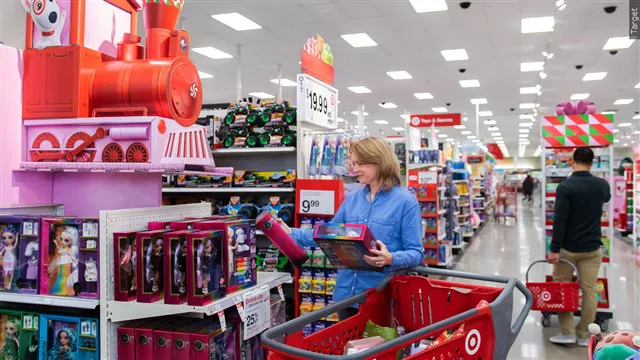Target’s Weak Holiday Forecast Raises Concerns for the Retail Industry
Target’s Weak Holiday Forecast Raises Concerns for the Retail Industry
Target Corporation, a major player in the retail landscape, has sounded the alarm for the upcoming holiday shopping season. The company recently issued a subdued forecast, predicting flat sales for the final quarter of the year. Coupled with a lowered profit outlook and sluggish growth of just 0.3% in its latest quarter, this announcement sent shockwaves through the market, causing Target’s stock (TGT) to plummet by approximately 15% in early trading.
This news is particularly significant because Target serves as a bellwether for consumer spending habits and the overall health of the retail industry. While a lackluster holiday season may not severely impact Target’s long-term viability, smaller retailers that rely on robust holiday sales could face significant challenges.
Challenges Facing Target
Strained Middle-Class Customers
Target’s core customer base—largely middle-class households—has been under pressure from rising prices and prolonged inflation. As a result, these shoppers have shifted their focus to essential items like groceries and household goods, reducing spending on discretionary categories such as home décor, electronics, and nonessential clothing.
“Consumers tell us their budgets remain stretched, and they’re shopping carefully as they work to overcome the cumulative impact of multiple years of price inflation,” said Target CEO Brian Cornell during a recent call with analysts.

Merchandise Mix and Pricing Issues
One of Target’s key challenges lies in its product assortment. Over half of its inventory consists of discretionary items, making the company more vulnerable to shifts in consumer sentiment compared to competitors like Walmart and Costco, which prioritize essentials and groceries.
Target’s pricing strategy has also come under scrutiny. While it has introduced discounts on thousands of items in an effort to attract shoppers, these measures have had a limited impact. In comparison, Walmart’s lower prices and extensive grocery offerings continue to draw a broader customer base, including middle- and upper-income shoppers.
“Target may be losing share among its middle- to upper-income consumers to retailers like Amazon, Costco, and Walmart,” noted Joseph Feldman, an analyst at Telsey Advisory Group.
The Competitive Landscape
Walmart’s Rising Success
While Target struggles, Walmart is thriving. The retail giant reported a 5.3% increase in U.S. sales at stores open for at least a year, along with an 8.2% profit growth in the last quarter. Walmart has also raised its financial outlook, signaling optimism for the holiday shopping season.
Notably, Walmart has been gaining traction among higher-income households. According to the company, 75% of its recent market share gains came from households earning over $100,000 annually.
Other Retail Winners
Discount chains like TJX, the parent company of TJ Maxx and Marshalls, have also posted strong results. TJX reported a 3% increase in same-store sales last quarter and raised its guidance, showcasing resilience in the face of shifting consumer priorities.
Implications for the Holiday Season
The holiday shopping period is crucial for retailers, accounting for a significant portion of annual revenue. For Target, flat sales projections and ongoing struggles with inventory and pricing highlight the challenges of competing in an increasingly price-sensitive market.
The broader retail sector will be closely watching how Target navigates this season, as its performance could indicate broader consumer spending trends. For smaller retailers, a weak holiday season could have far-reaching consequences, potentially leading to store closures and financial instability.
What Lies Ahead for Target?
To regain momentum, Target must address several pressing issues:
- Rebalancing Inventory: Reducing its focus on discretionary items and expanding essential goods offerings could help Target compete more effectively with Walmart and Costco.
- Competitive Pricing: Adjusting pricing strategies to better align with competitors may attract budget-conscious shoppers.
- Customer-Centric Innovations: Introducing initiatives that enhance the shopping experience, such as loyalty programs or targeted discounts, could help build customer retention.
Despite its current struggles, Target remains a resilient player with a loyal customer base. However, its ability to adapt to changing consumer demands and economic conditions will be critical to its success in the coming months.
Conclusion
Target’s cautious outlook for the holiday season serves as a wake-up call for the retail industry. With middle-class shoppers tightening their budgets and competition from giants like Walmart intensifying, retailers must remain agile and innovative to thrive in this challenging environment.
As the holiday season unfolds, all eyes will be on Target to see whether it can overcome these hurdles and regain its footing—or if its struggles signal a broader shift in the retail landscape
Related
Discover more from NewsPour
Subscribe to get the latest posts to your email.




Let your voice be heard! Share your thoughts and ignite discussions.